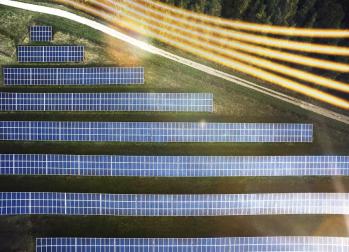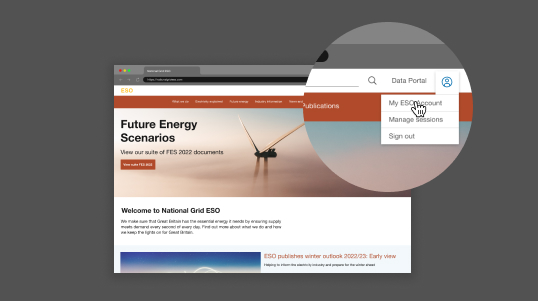This page summarises the Operational Notification and Compliance Process (ONCP) facilitated by ESO in respect of new generation connections. The ONCP embraces the requirements of the Compliance Processes section of the Grid Code and the specific requirements of Bilateral Agreements.
The latest version of the Grid Code can be accessed via the ESO website and the link provided in the “Useful Website Links” section of this document.
All customers that are party to either a Bilateral Connection Agreement (BCA), Bilateral Embedded Generation Agreement (BEGA) or Bilateral Embedded Licence exemptable Large power station Agreement (BELLA) and Construction Agreement, where applicable, with ESO in respect of a new generation connection will be required to demonstrate compliance with the relevant requirements of these agreements together with the relevant requirements of the Grid Code prior to receiving Operational Notifications for their connection.

An introduction to the compliance process
Whilst this document focusses on new generation connections, the guidance may also be considered to represent best practice and be applied in respect of new demand connections. If you have any feedback or questions in respect of any part of this guidance document, we would welcome your feedback and encourage you to discuss this with your ESO Contract Compliance Manager.
There are three types of Operational Notification issued by ESO in respect of new generation connections, which are referred to within the Grid Code, as follows:
Energisation Operational Notification (EON): This is required for first energisation (back feed) of a new connection when connecting directly to the National Electricity Transmission System. Note: an EON will not be issued by ESO to customers that are party to either a BEGA or BELLA as energisation will be managed between the host Distribution Network Owner and the customer.
Interim Operational Notification (ION): This is required for first export (either reactive power or active power). The ION will include a schedule of unresolved issues that will need to be satisfactorily completed following commencement of export of reactive and active power and prior to a Final Operational Notification being issued. The ION may also include Operational Restrictions that will apply to the new connection until satisfactorily addressed.
Final Operational Notification (FON): This is issued when all issues identified within the ION have been satisfactorily addressed.
Here you can download guidance documents and other resources related to the compliance process.
Guidance documents
Here you can download any of our guidance documents
Additional documents
Here you can download any of our other compliance documents
ESO will initiate and chair a series of Operational Notification and Compliance Panel Meetings to facilitate the Operational Notification and Compliance Process (ONCP). The timing of these meetings is as referred to in Section 3 of this document.
The focus of these meetings is ensuring that the customer has fulfilled their obligations and that ESO is able to issue the appropriate Operational Notification in line with customer aspirations.
Several documents will be issued to the customer by ESO prior to the first Operational Notification and Compliance Panel Meeting, these are as summarised below:
- Compliance Statement: This lists the requirements of the Grid Code and the site-specific requirements of the Appendix F (Site Specific Technical Requirements) to the BCA, BEGA or BELLA as applicable. The customer will complete this to confirm their compliance with the relevant requirements providing supporting comments as appropriate. The Compliance Statement will make reference to the version of the Grid Code referenced at the time of preparation and this can be used as a reference point against which the requirements of any subsequent Grid Code updates and their applicability to a new generation connection can be assessed. Example Compliance Statements have been provided in Appendix 1.
- Operational Notification and Compliance Checklist (ONCC): This is a high-level checklist of key milestones and activities for the customer to complete through the ONCP and prior to the issue of an EON, ION and FON. A number of example ONCCs have been provided in Appendix 2. The ONCC specifies the lead party between the Relevant Transmission Owner and ESO for the approval of each of the compliance items.
- User Data File Structure (UDFS): This is a blank folder structure which is to be populated by the customer to demonstrate compliance with the items identified within the Compliance Statement and ONCC. The customer will submit the UDFS to ESO for review. Submissions can be made using ESO’s web-based facility and access details will be provided once the ONCP commences. In line with STCP19-3, the data is shared with the Relevant Transmission Owner who also provides acceptance of some of the compliance items.
Additional Compliance Process Templates:
- User Self Certification of Compliance: The customer will be required to complete and sign this document and submit together with the final Compliance Statement prior to the issue of an EON, ION and FON. This should reflect all the items that remain outstanding as on the ION’s Schedule of Unresolved Items.
- Notice of Intention to Synchronise: This is submitted by the customer prior to commencing export of reactive power and / or active power and requests the issue of an ION.
- Certificates of Readiness: There are a number of certificates of readiness that are submitted by the customer, as follows:
For customers who will connect directly to the National Electricity Transmission System, these are:
- Certificate of Readiness to Commence the Commissioning Programme
- Certificate of Readiness to Complete the Commissioning Programme,
- Certificate of Readiness to Energise High Voltage Equipment.
For customers who will connect to a distribution system, this is:
- Certificate of Readiness to Use the Transmission System.
The timeline below provides a high-level overview of the Compliance Process. It does not cover all process steps required to demonstrate Compliance. For more detailed timescales on specific documents or milestones please refer to the Operational Notification and Compliance Checklist (ONCC) or contact your Contract Compliance Manager.
24-18 Months Prior to Energisation/Export
Following the customer signing the Bilateral Agreement, the Electricity Connections Contract Manager will provide the contact details of the allocated Contract Compliance Manager (if they have not already been in contact).
18-12 Months Prior to Energisation/Export
The inaugural Operational Notification and Compliance Panel meeting to be held. This is arranged and chaired by the ESO Contract Compliance Manager. Attendees will include the customer (or representative), ESO Contract Compliance Manager, ESO Generator Compliance Engineer (where required) and a representative from the Relevant Transmission Owner. The “Compliance Toolkit” documents will be provided in advance of this meeting. The agenda of the meeting will be to introduce the scheme and also the Compliance Process and documentation.
12 Months Prior to Energisation/Export
Balancing and Settlement Code registrations with Elexon to be commenced by the customer. It is advised that contact is made with Elexon 12 months in advance. Please refer to the guidance note provided on the Elexon website contained in the “Useful Website Links” section of this guide.
9 Months Prior to Energisation/Export
The generator Control Point to be confirmed by the customer via return of ESO Registration Form (which can be requested via the ESO BM Registration team email address ([email protected]). If it is to be a new Control Point, it will require communication facilities to be established.
Please refer to the ESO Registration Form guidance note on the ESO Compliance website (link has been provided at the end of this guide) for details of how to obtain and complete the form. If an established Control Point, or Control Point Service Provider is being used, this form should be submitted 6 months prior to anticipated export date.
6 Months Prior to Energisation/Export
UDFS to be submitted by the customer to ESO and the Relevant Transmission Owner for review, along with a compliance statement. A follow up Operational Notification and Compliance Panel meeting will be arranged to discuss the content of the UDFS revision and any feedback. Guidance notes for Data Registration Code submission, and Generator Compliance Connection Conditions can be found on the ESO Compliance Website (the link is provided at the “Useful Website Links” section of this guide). These documents will help for preparation of the required schedules and reports to be included within the UDFS.
6-3 Months Prior to Energisation/Export
Further UDFS revisions to be submitted by the customer to ESO for review. Final submission is to be submitted 3 months prior to first energisation / export date.
2 Months Prior to Energisation/Export
ESO and Relevant Transmission Owner complete the review of the final UDFS revision. Any feedback that is provided must be addressed by the customer.
1 month to 1 week Prior to Energisation/Export
The customer signs and submits the User Self Certification of Compliance and Certificates of Readiness to ESO. The Relevant Transmission Owner will counter sign where required, and also submit their authorisation for ESO to issue the Operational Notification. Data communication links will be validated with the customer’s Control Point by ESO where required by the Bilateral Agreement, and Operational Metering will be confirmed.
28 days Prior to Synchronisation
The customer submits a Notice of Intention to Synchronise prior to commencing export of reactive power and / or active power and requests the issue of an ION.
1 Week Prior to Energisation/Export
Elexon issue their Approval to Energise to the customer and ESO, confirming all Balancing and Settlement Code registrations with Elexon have been completed.
1 week Prior to Energisation/Export
EON/ION issued to the customer by ESO with an effective from date stated.
Note: Energisation/Export can commence from the effective from date stated in the relevant Operational Notification.
Connection Type
Upon receipt of the required documentation, ESO will issue the EON with an effective from date stated. Energisation/Export can commence from the effective from date stated in the relevant Operational Notification.
Upon receipt of the required documentation, ESO will issue the with an ION with an effective from date and expiry date stated. Depending on the site-specific detail of the Bilateral Agreement and size/type of the generator, witnessed testing will be required to be undertaken with ESO. This will be advised upon during Operational Notification and Compliance Panel meetings, and items required to be satisfied prior to the issuing of the FON will be stated within a schedule of unresolved issues attached the ION.
The lifetime of an ION is 24 months; the period within which all items should be resolved.
As soon as the customer is aware of their inability to resolve any outstanding items within the ION timescales, they should notify ESO as a derogation would be required. Any ION extensions (beyond the 24 months) would be subject to the Customer having applied to Ofgem for a derogation for any remaining Unresolved Issues.
Upon a derogation being granted by Ofgem, the Customer should submit their final Compliance Statement accompanied by a final User Self Certification of Compliance and final UDFS including any updated and / or new submissions as may be applicable.
Once all of the items listed within the ION schedule have been satisfactorily completed and the customer has submitted a final Compliance Statement accompanied by a final User Self Certification of Compliance and final UDFS submission including any updated and / or new submissions as may be applicable, a FON can be issued, signifying completion of the Operational Notification and Compliance process.
The Compliance Process timeline for offshore projects is broadly similar to that summarised above. For more detailed timescales on specific documents or milestones for offshore projects, please refer to the Operational Notification and Compliance Checklist (ONCC) which your allocated Contract Compliance Manager will provide specifically for your offshore connection.
Generator build offshore projects are subject to OTSDUW Arrangements, as defined in Grid Code, whereby certain aspects of the design, consenting, construction, installation and/or commissioning of transmission assets are capable of being undertaken by a customer prior to the transfer of those assets to a Relevant Transmission Licensee under an Offshore Tender Process. When the customer is acting in such a capacity, they will be referred to as the OTSDUW User.
The site-specific technical requirements applicable to the customer at the Offshore Grid Entry Point, as defined in the Grid Code, will be specified in the Appendix F to the relevant bilateral agreement. The site-specific technical requirements applicable to the customer, in their capacity as OTSDUW User, at the Transmission Interface Point, as defined in the Grid Code, will be specified in the Appendix OF to the relevant construction agreement.
For offshore connections, two separate Compliance Statements will be provided by the allocated Contract Compliance Manager: one to the customer for completion with respect to their compliance requirements at the Offshore Grid Entry Point and one to the customer, in their capacity as OTSDUW User, for completion with respect to their compliance requirements at the Transmission Interface Point.
A single ONCC will be provided which specifies a high-level checklist of key milestones and activities for the customer to complete through the Compliance Process in their role as both wind farm owner and OTSDUW User. The range of examples of ONCC’s in Appendix 2 of this guidance document includes an example specific to Generator build offshore projects.
The ION is split into ION Part A and ION Part B for offshore connections both of which have a lifetime of 24 months. ION Part A is required for commissioning of any dynamic reactive compensation equipment for export of reactive power. ION Part B is required for first export of active power from the wind farm.
The customer will be issued with a Completion Notice at the time of issue of the ION Part B to initiate the asset transfer (to an OFTO) process. Under any scenario whereby the issue of the ION Part B is staged, the Completion Notice will be issued at the time of issue of the final stage of the ION Part B.
Further guidance on the asset transfer process can be found on Ofgem’s website which can be accessed via the link provided in the “Useful Website Links” section of this document:
Section K Notifications
The steps below are followed leading up to the issuing of a Section K Notification:
- ESO has monthly update meetings with Ofgem in which asset transfer dates for offshore networks and the preferred bidder / Section 8A dates are discussed. The Section 8A date is the date when an OFTO is appointed/issued a Transmission Owner Licence. This 8A date is in advance of the OTSUA Transfer date.
- On confirmation that an OFTO has been appointed (and before the offshore asset transfer occurs), there will be an OTSDUW completion report issued to the ESO Connections Contract Manager.
- The Completion Report is reviewed and amended as appropriate. Once the Completion Report is accepted, the Connections Contract requests for ed and accepted.
An Interim Section K Notification (ISKN) is issued by ESO to the appointed OFTO listing the parts of the Compliance process requiring completion (the elements outstanding on the ION Part A). These items are to be transferred onto the ISKN schedule.
A Final Section K Notification (FSKN) is issued by ESO to the appointed OFTO following successful completion of the Compliance process i.e. there are no outstanding items on the ION Part A).
This will be advised upon during Operational Notification and Compliance Panel meetings and items required to be satisfied prior to the issuing of the Section K Notification to the assigned Relevant Transmission Licensee. A Final Section K Notification (FSKN) is issued if all items within the schedule of unresolved issues attached the ION Part A are closed whereas an Interim Section K Notification (ISKN) is issued should any of them remain open at this time.
Derogations for Offshore Connections
As soon as the customer is aware of their inability to resolve any outstanding items within the ION Part A and/or ION Part B timescales, they should notify ESO as a derogation would be required. Any ION extensions (beyond the 24 months) would be subject to the Customer having applied to Ofgem for a derogation for any remaining Unresolved Issues.
Upon a derogation being granted by Ofgem, the Customer should submit their final Compliance Statement accompanied by a final User Self Certification of Compliance and final UDFS including any updated and / or new submissions as may be applicable.
Final Operational Notifications for Offshore Connections
Once all of the items listed within the ION Part B schedule have been satisfactorily completed and the customer has submitted a final Compliance Statement accompanied by a final User Self Certification of Compliance and final UDFS submission including any updated and / or new submissions as may be applicable, a FON can be issued, signifying completion of the Operational Notification and Compliance Process.
Following the issue of a FON, the Grid Code stipulates that should the customer and/or ESO become aware of the customer being unable to meet any of their Grid Code or Bilateral Agreement requirements, the following steps should be followed:
- The Customer should notify ESO as soon as they become aware of their inability to meet any of its Grid Code and/or Bilateral obligations. The notification should provide details of the non-compliance, operational restrictions that should be applied ad an indication when the resolutions will be resolved.
- Depending on the severity of the non-compliance, the Customer my be disconnected in line with Paragraph 5.4 of the CUSC https://www.nationalgrideso.com/document/91366/download
- Should the non-compliance remain unresolved within 28 days of notifying ESO, then the Customer shall undertake an investigation to determine the causes of and solution to the non-compliance. Such investigation shall continue for no longer than 56 days.
- Should the non-compliance remain unresolved at the end of the 56-day period, ESO shall issue a Limited Operational Notification to expire no later than 12 months
A LON will also be issued by ESO requesting the Customer to go through the compliance process:
- Upon receipt of notification from the Customer of their intention to modify their Plant and Apparatus; or
- Upon receipt of documentation indicating a change in Plant and Apparatus that ESO deems to result in a material change of performance.
If the non-compliance is to remain unresolved by the time the LON is due to expire, the Customer should apply to Ofgem for a derogation before the LON expiry date. Any LON extensions (beyond the 12 months) would be subject to the Customer having applied to Ofgem for a derogation for any remaining Unresolved Issues.
Upon a derogation being granted by Ofgem, the Customer should submit their final Compliance Statement accompanied by a final User Self Certification of Compliance and final UDFS including any updated and / or new submissions as may be applicable.
Refer to Compliance Process Section 8 and Section 9 for the of the Grid Code for further details on LONs and derogations.
Non-Compliance Self-Reporting (NCSR)
Customers who have reached a Connections Contract / Bilateral Agreement with ESO and are aware of a non-compliance or suspected non-compliance against any of the requirements of the Grid Code must notify ESO immediately. Importantly, a non-compliance or suspected non-compliance can equally be raised by other connection stakeholders, particularly Transmission Owners and / or by ESO respectively.

The process of non-compliance reporting can be summarised into the following stages of interaction in the image above.
Report any suspected / actual non-compliance to ESO
Customers who wish to provide evidence of non-compliance or supporting documentation can send this to: [email protected]

Get in touch
If you have any questions about the compliance process, you can get in touch with our team.

